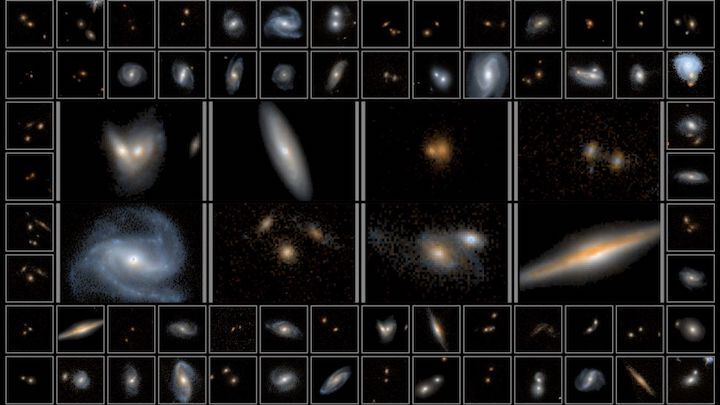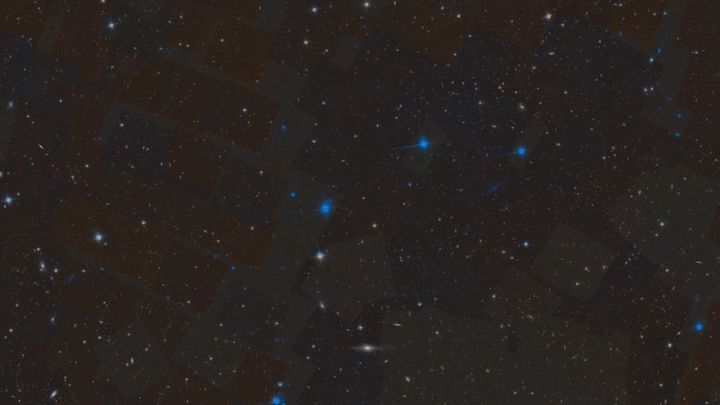10.06.2022
The work paves the way for the James Webb Space Telescope

A selection of galaxies, going back 10 billion years, from the 3D-DASH mosaic. (Image credit: Lamiya Mowla)
The largest near-infrared image of galaxies ever taken by the Hubble Space Telescope has provided a playground for astronomers who are seeking out potential targets for the James Webb Space Telescope.
The image is the result of a project called 3D-DASH and was captured by the Hubble Space Telescope's Wide Field Camera 3 (WFC3), with additional archive data from Hubble's Advanced Camera for Surveys. It spans 1.35 square degrees of the sky, equivalent to about six full moons, and contains thousands of galaxies. The aim is to identify the galaxies worthy of further study by the James Webb Space Telescope and other telescopes in the future.
"I am curious about giant galaxies, which are the most massive ones in the universe formed by the mergers of other galaxies," said Lamiya Mowla, an astronomer at the Dunlap Institute for Astronomy and Astrophysics at the University of Toronto and leader of the new research, said in a statement. "How did their structures grow, and what drove the changes in their form? It was difficult to study these extremely rare events using existing images, which is what motivated the design of this large survey."
as they existed about 10 billion years ago, and the light of brilliant star-forming regions within them have been redshifted by the expansion of the universe into near-infrared wavelengths. You can see these galaxies in more detail in an online interactive version of the image from the 3D-Dash image explorer.
Unlike Hubble, Webb will be able to scrutinize these galaxies in greater detail, thanks to the increased light-gathering power of the newer telescope's 6.5-meter (21.3 feet) mirror. With Webb's first science-quality images set to be released July 12, the publication of the 3D-DASH data is timely indeed.

A selection from the full 3D-DASH image, which is the largest mosaic ever assembled by the Hubble Space Telescope in infrared. (Image credit: Lamiya Mowla)
For larger survey images, astronomers will have to wait for the European Space Agency's Euclid mission and NASA's Nancy Grace Roman Space Telescope, which will have greater fields of view (0.79 x 1.16 degrees and 0.8 x 0.4 degrees, respectively) than Hubble and Webb and are set to be launched in 2023 and 2027, respectively.
The research has been accepted for publication in The Astrophysical Journal, and a preprint version is available via the arXiv database.
Quelle: SC
